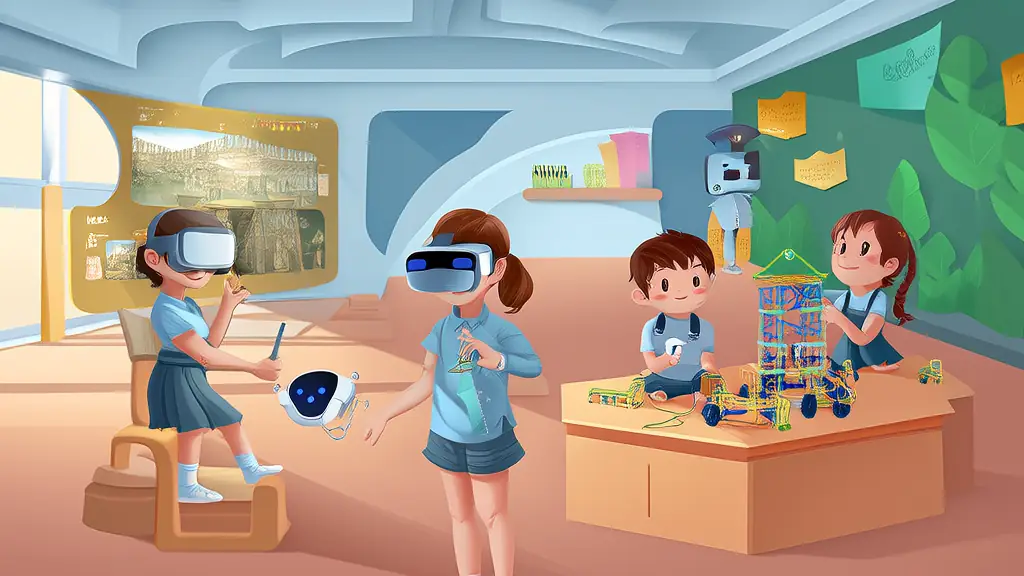
Empowering the Next Generation: Navigating K12 Education in 2025
Welcome to our exploration of K12 education, a journey that not only shapes young minds but also prepares them for the future. As we stand on the cusp of new educational paradigms, it's crucial for parents and educators to stay informed about the latest methodologies, child development insights, and technological advancements. This blog post aims to provide you with valuable information, practical tips, and inspiring success stories to help guide your efforts in supporting and educating our children.
The Shift Towards Student-Centered Learning
One of the most significant trends in K12 education is the move from traditional, teacher-centered instruction to more student-centered approaches. Methods such as project-based learning (PBL), flipped classrooms, and cooperative learning are gaining traction. These methods encourage students to take an active role in their learning, fostering critical thinking, problem-solving skills, and collaboration.
Example: In a PBL setting, students might work on a project to design a sustainable city. They research, plan, and present their ideas, integrating subjects like science, math, and social studies. This not only makes learning more engaging but also helps students see the real-world relevance of what they are studying.
Understanding Child Development: Insights and Research
Recent research in child development has provided us with deeper insights into how children learn best. For instance, studies have shown that incorporating play into early childhood education can significantly enhance cognitive, social, and emotional development. Additionally, the importance of social-emotional learning (SEL) cannot be overstated. SEL programs teach students to manage emotions, set goals, show empathy, and maintain positive relationships, all of which are essential for long-term success.
Actionable Advice: Parents and teachers can support SEL by creating a safe and supportive environment where children feel comfortable expressing themselves. Regularly discuss feelings and emotions, and model healthy coping mechanisms. Incorporate activities that promote teamwork and empathy, such as group projects or community service.
Educational Technology: Tools and Trends
Technology continues to transform the educational landscape, offering new tools and platforms that enhance teaching and learning. Adaptive learning technologies use algorithms to tailor content to individual student needs, ensuring that each child progresses at their own pace. Virtual and augmented reality (VR/AR) provide immersive experiences that can make complex concepts more accessible and engaging. Additionally, learning management systems (LMS) and digital portfolios help track student progress and facilitate communication between teachers, students, and parents.
Example: A middle school science class uses VR to take a virtual field trip to the International Space Station. Students can explore the station, conduct experiments, and gain a deeper understanding of space science in a way that textbooks alone cannot provide.
Practical Tips for Parents and Teachers
To ensure that students thrive in this evolving educational environment, here are some practical tips for both parents and teachers:
- Stay Informed: Keep up with the latest research and trends in education. Attend workshops, webinars, and conferences to expand your knowledge and network with other educators and parents.
- Communicate Openly: Maintain open lines of communication between home and school. Regularly share updates, concerns, and successes to create a collaborative and supportive environment.
- Encourage Curiosity: Foster a love of learning by encouraging questions and exploration. Provide resources and opportunities for students to pursue their interests and passions.
- Set Clear Expectations: Clearly communicate expectations for behavior, academic performance, and participation. Consistency and clarity help students understand what is expected of them and build a sense of responsibility.
Success Stories and Case Studies
Real-world examples can inspire and inform our practices. Here are a few success stories that highlight the impact of innovative teaching methods and technology:
Case Study 1: The Flipped Classroom Model
A high school in California implemented the flipped classroom model, where students watched video lectures at home and used class time for hands-on activities and discussions. This approach led to a 20% increase in student engagement and a 15% improvement in test scores.
Case Study 2: Social-Emotional Learning Program
An elementary school in New York introduced a comprehensive SEL program, including regular mindfulness sessions and peer mentoring. Over two years, the school saw a 30% reduction in disciplinary incidents and a 25% increase in student well-being and self-esteem.
Conclusion: Embrace the Future of Education
As we navigate the ever-evolving landscape of K12 education, it's clear that a combination of innovative teaching methods, a deep understanding of child development, and the strategic use of technology can lead to remarkable outcomes. By staying informed, communicating openly, and fostering a love of learning, we can empower our children to reach their full potential. Let's continue to learn, adapt, and grow together, ensuring that every child has the opportunity to succeed.
Join the conversation and share your experiences, tips, and success stories in the comments below. Together, we can make a difference in the lives of our students and shape a brighter future for all.